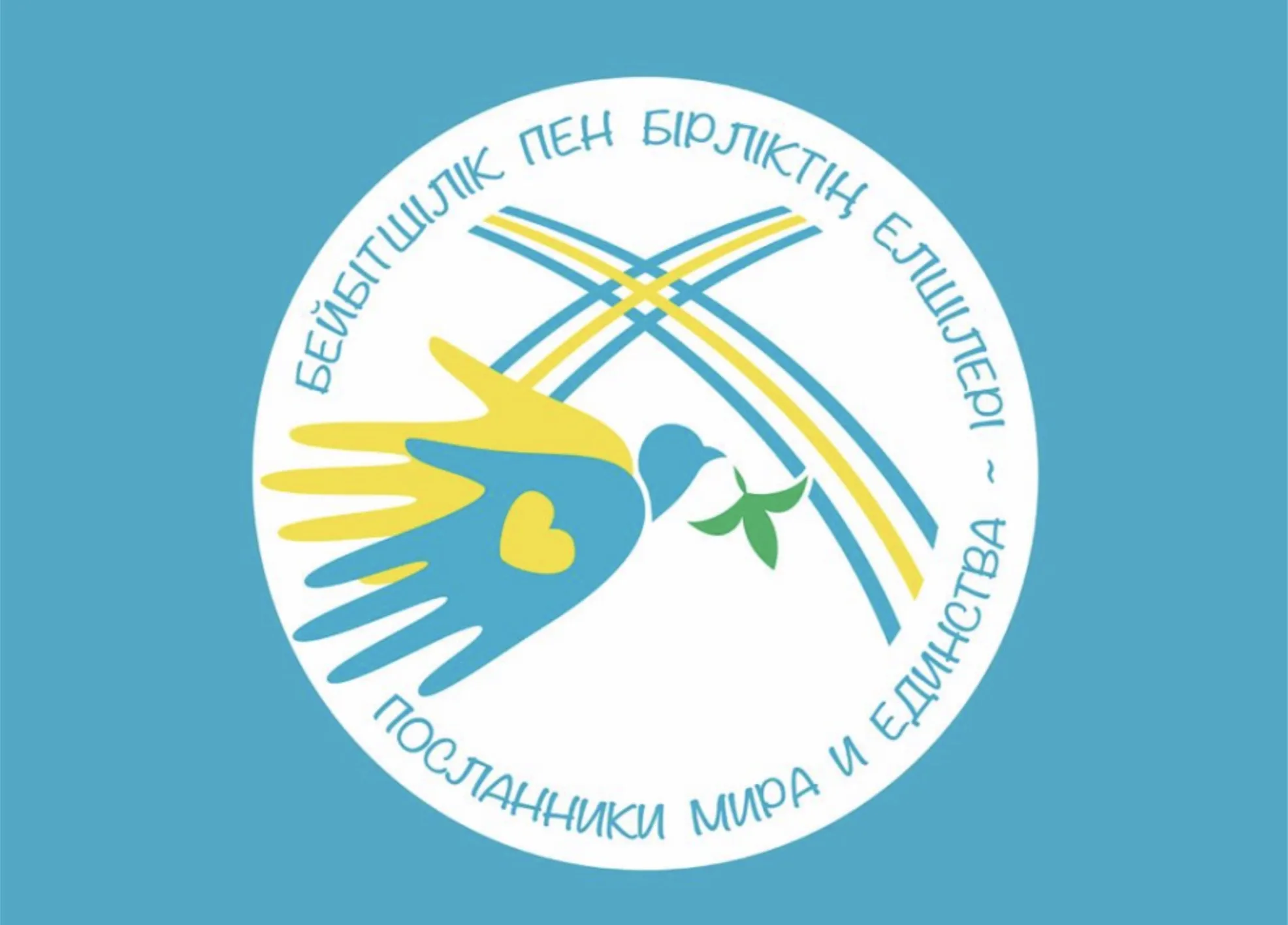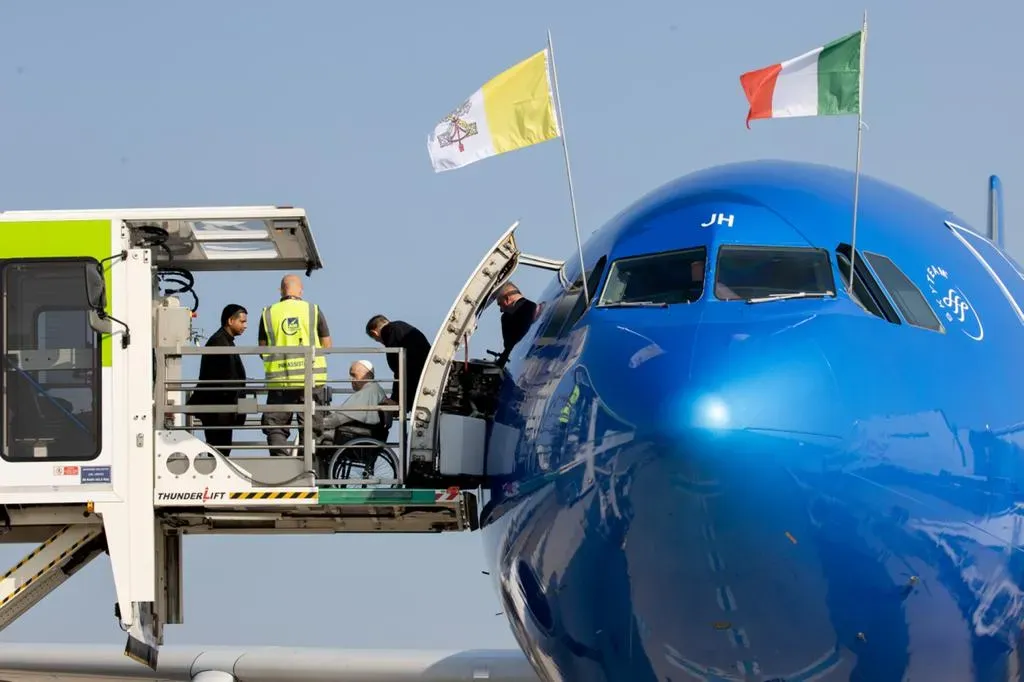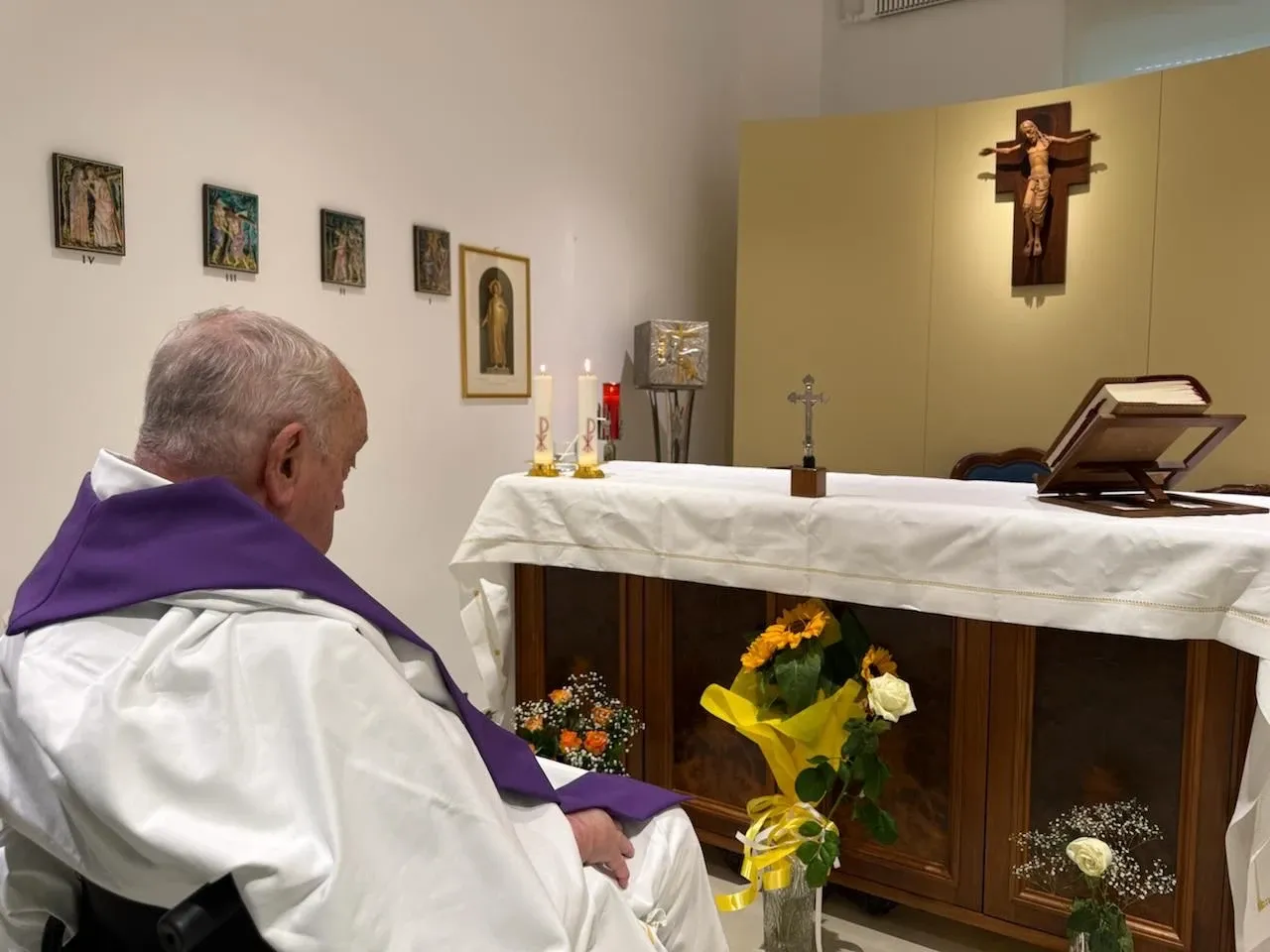A heart on the dove’s wing “represents love, fruit of reciprocal understanding, cooperation, and dialogue,” according to the Vatican press release.
The olive branch has been drawn in the shape of a typical Kazakh Ornament, a type of ancient folk art.
Behind the dove, blue lines form the image of a “shanyrak,” part of the Emblem of the Republic of Kazakhstan. The “shanyrak” symbolizes the upper dome-like portion of a yurt, the traditional round tent used by nomadic groups in Central Asia. Yellow lines inside the blue lines form a cross.
The blue and yellow of the logo are the colors of the Kazakhstan flag.
Ethnic Kazakhs are predominantly Sunni Muslims, the most commonly practiced religion in the country. According to a 2009 national census, the second most practiced religion is Russian Orthodox Christianity, at more than 20%. The country, which has approximately 250,000 Latin-rite Catholics, according to 2008 statistics, is also home to many immigrants.
Pope Francis erected an apostolic administration for Byzantine Catholics in Karaganda, Kazakhstan, in 2019, highlighting the growing number of Ukrainian Greek Catholics in the country, which some estimates put at around 10,000.
Kazakhstan is the world’s largest landlocked country but has one of the lowest population densities. The country shares borders with Russia, China, Kyrgyzstan, Uzbekistan, and Turkmenistan and adjoins part of the Caspian Sea.
Hannah Brockhaus is Catholic News Agency's senior Rome correspondent. She grew up in Omaha, Nebraska, and has a degree in English from Truman State University in Missouri.









